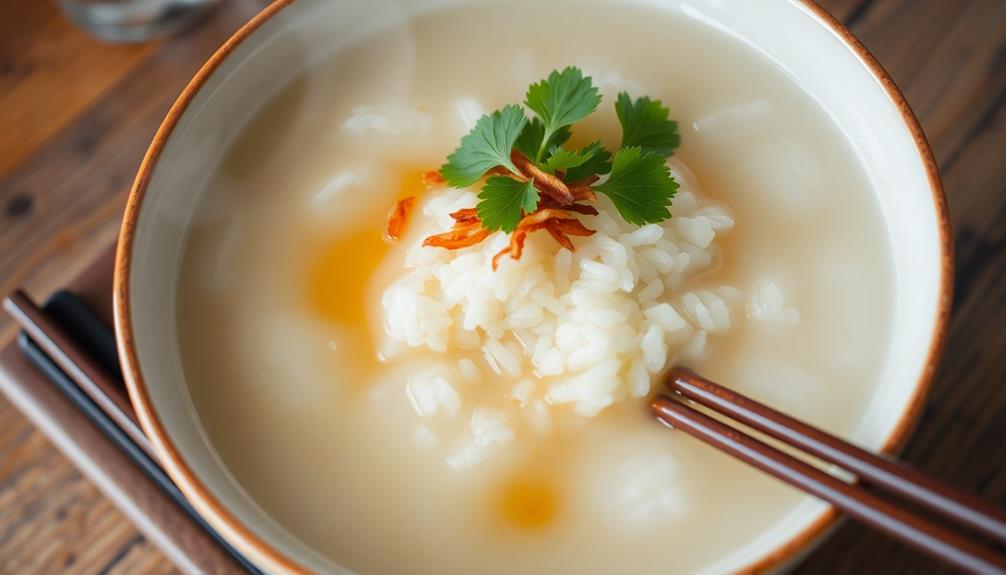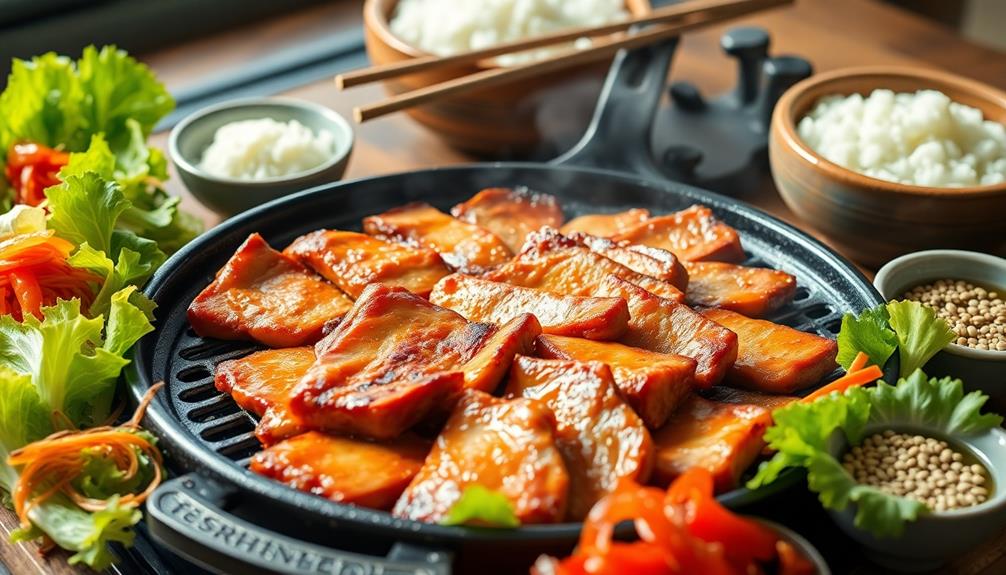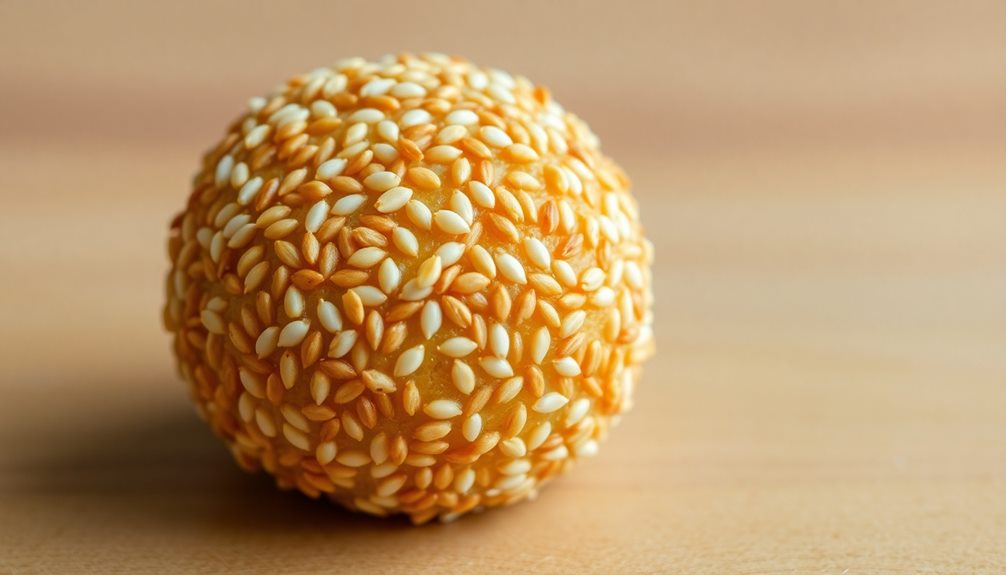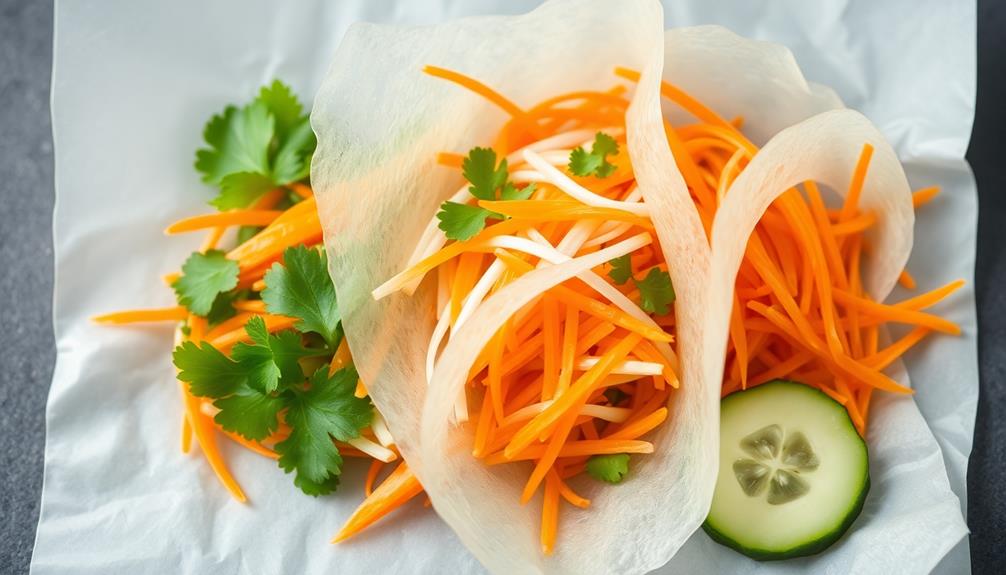Chao, the comforting and nourishing Asian rice porridge, has a long history in many cuisines. You'll love how easily you can make it at home – just soak some rice, then simmer it in broth until it's nice and creamy. Feel free to get creative with toppings like scallions, ginger, soy sauce, and crispy fried shallots. Whether you enjoy it for breakfast, lunch, or a soothing snack, chao's versatility and health benefits make it a wonderful addition to your meals. The best part? There's so much more to learn about this beloved dish…
Key Takeaways
- Chao is a traditional Asian rice porridge known for its comforting qualities, popular in various Asian cuisines, including Chinese, Vietnamese, and Thai.
- Chao is often associated with comfort and healing, and is frequently consumed during illness or recovery for its soothing properties.
- Chao can be fortified with proteins, vegetables, and other ingredients to enhance its nutritional content and flavor profile.
- The basic preparation of chao involves soaking and rinsing the rice, simmering it in broth, and adding garnishes and seasonings.
- Chao is a versatile dish that can be served as a breakfast, lunch, dinner, or snack, and can be customized to suit diverse tastes.
History
Although the exact origins of chao, or rice porridge, are unclear, it's believed to have been a staple dish in various Asian cultures for centuries.
You can imagine families gathering around the table, eagerly awaiting the steaming bowl of comforting chao. The aroma of simmering rice and aromatic herbs would have filled the air, making mouths water in anticipation.
Over time, different regions developed their own unique variations of chao, each with its own distinct flavors and toppings. In China, you might find chao made with savory soy sauce and scallions, while in Vietnam, it might be topped with shredded chicken and crispy fried shallots.
Regardless of the specific recipe, chao has always been a beloved and nourishing dish, providing sustenance and bringing people together.
Today, chao remains a beloved comfort food, enjoyed by people of all ages across Asia. Its versatility and simplicity make it a timeless and treasured part of many culinary traditions.
Recipe
Chao, a comforting and versatile rice porridge, is a beloved dish in many Asian cuisines. It can be enjoyed as a simple breakfast, a soothing lunch, or even a satisfying dinner. The gentle flavors and soft, creamy texture of chao make it a nourishing and comforting meal.
The beauty of chao lies in its adaptability. While the basic recipe calls for just a few ingredients, the dish can be customized with a variety of toppings and add-ins, allowing you to tailor it to your personal taste preferences.
- 1 cup short-grain rice
- 6 cups chicken or vegetable broth
- 1 teaspoon salt
- 1 tablespoon soy sauce (optional)
- 1 tablespoon toasted sesame oil (optional)
To prepare the chao, rinse the rice thoroughly until the water runs clear. In a large pot, combine the rinsed rice and broth. Bring the mixture to a boil over high heat, then reduce the heat to low, cover, and simmer for 30-40 minutes, stirring occasionally, until the rice has broken down and the porridge has thickened to your desired consistency.
Once the chao is cooked, stir in the salt and, if desired, the soy sauce and sesame oil. The soy sauce and sesame oil can add depth of flavor and a savory note to the dish.
Serve the chao hot, garnished with your choice of toppings, such as sliced green onions, shredded chicken, sautéed mushrooms, or a soft-boiled egg. For an extra kick of flavor, drizzle some soy sauce or a sprinkle of sesame seeds on top of the chao. The possibilities are endless when it comes to customizing your bowl of chao to suit your taste preferences. And for a sweet dessert soup, consider adding a touch of honey or a dollop of fruit compote to finish off your meal on a high note.
Cooking Steps
First, soak the rice in water overnight to soften it up.
Then, drain and rinse the rice to get rid of any excess starch.
Next, add some broth and let it simmer until the rice becomes nice and creamy.
Step 1. Soak Rice in Water Overnight

To prepare the rice for the chao, you'll want to start by soaking the rice in water overnight. This simple step helps to soften the grains, making them easier to cook and blend into a smooth, creamy porridge.
Simply place the rice in a large bowl and cover it with plenty of clean water. Let it sit on your kitchen counter for 8 to 12 hours, or even overnight while you sleep.
The water will gradually be absorbed by the rice, plumping up the grains and breaking down the starches. This pre-soaking step is essential for getting that classic chao texture – not too thick, but deliciously velvety.
When you wake up in the morning, the rice will be ready to drain, rinse, and add to your pot. Soaking the rice is a hands-off way to kickstart the cooking process and set yourself up for chao success.
With this simple prep work done, you'll be one step closer to enjoying a heartwarming bowl of steaming hot chao.
Step 2. Drain and Rinse Rice
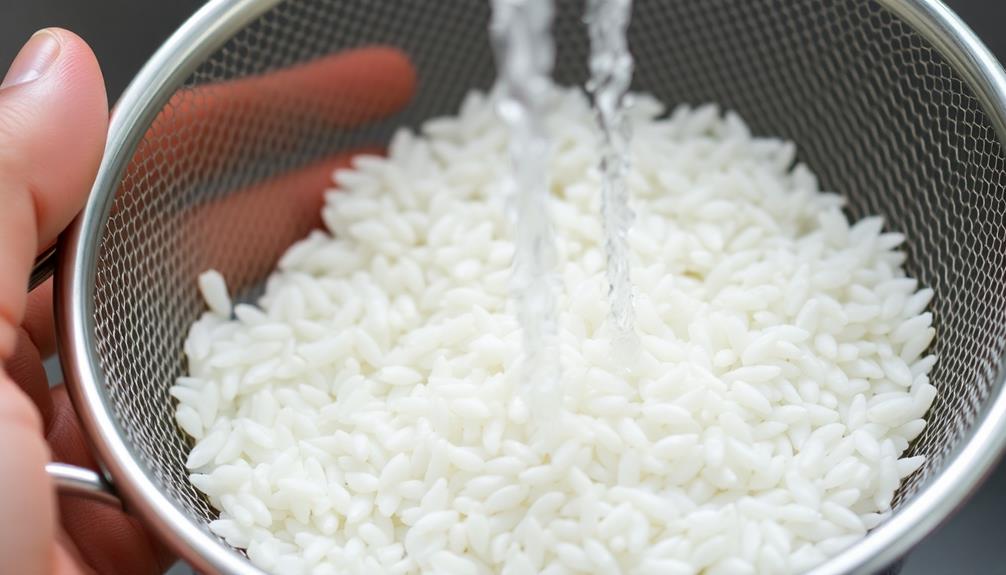
After the rice has soaked overnight, you'll want to drain and rinse it. This step is super important to get your chao (rice porridge) just right!
First, grab a fine-mesh strainer and place the soaked rice inside. Gently shake the strainer back and forth to let all the water drain out. You might need to press down on the rice a bit to help it along.
Once the rice is drained, it's time to give it a good rinse. Turn on the faucet and let cool water run over the rice, stirring it around with your hands. Keep rinsing until the water runs clear – this helps remove any excess starch, making your chao nice and smooth.
Drain the rice one more time, then you're ready to start cooking! The rinsed rice should have a clean, fresh smell, just waiting to be transformed into a steaming bowl of delicious chao.
Step 3. Add Broth and Simmer
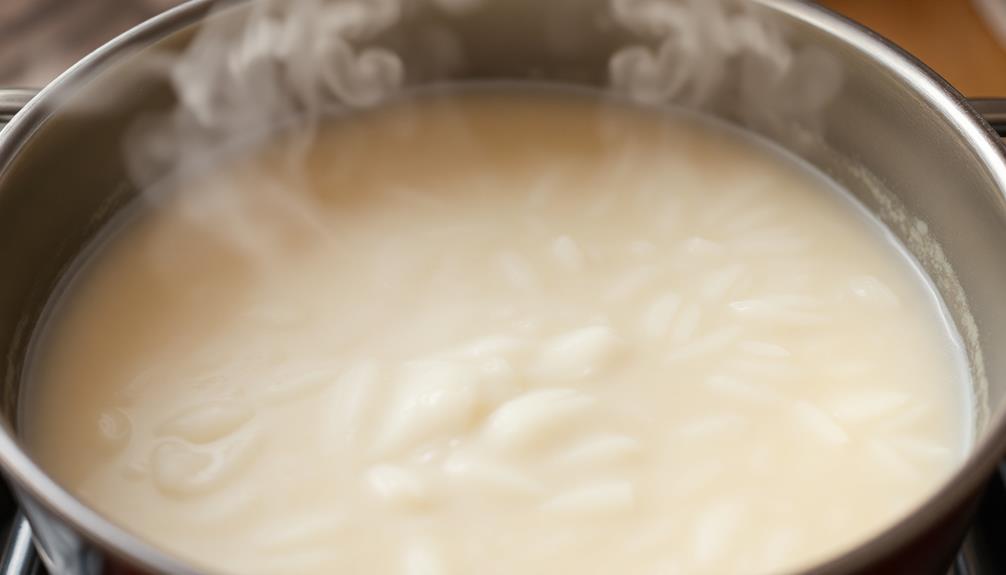
With the rice now rinsed, you'll want to add your choice of broth to the pot. Whether it's chicken, vegetable, or even beef broth, the rich flavor will really make your chao come alive!
Go ahead and pour it in, making sure to cover the rice by about an inch or two. Now, turn the heat up to medium and let it come to a gentle simmer.
As the broth heats up, you'll start to see little bubbles forming on the surface. That's a good sign!
Keep an eye on it, stirring occasionally, and let it simmer for about 30-40 minutes. The rice will slowly break down, creating that wonderfully creamy texture you're after.
You might need to add a splash more broth if it starts to get too thick. Just use your best judgment and keep tasting as you go.
Step 4. Add Garnish and Seasonings

Once the chao has simmered to your desired consistency, it's time to start adding the garnishes and seasonings!
First, grab a handful of fresh cilantro and chop it up into tiny pieces. Sprinkle the fragrant cilantro all over the top of your chao – the green flecks will make it look so fancy!
Next, slice up a juicy lime and give the chao a big squeeze of tangy citrus. The lime will brighten up the flavor and give it a zesty kick.
Don't forget the white pepper! Just a light sprinkling of this warm, earthy seasoning will take your chao to new heights.
You can also drizzle in a touch of sesame oil for a nutty aroma.
Finally, top it all off with crispy fried shallots for a delightful crunch in every bite.
Stir everything together and prepare to be amazed by the explosion of flavors! Your chao is now ready to enjoy.
Step 5. Serve Hot and Enjoy
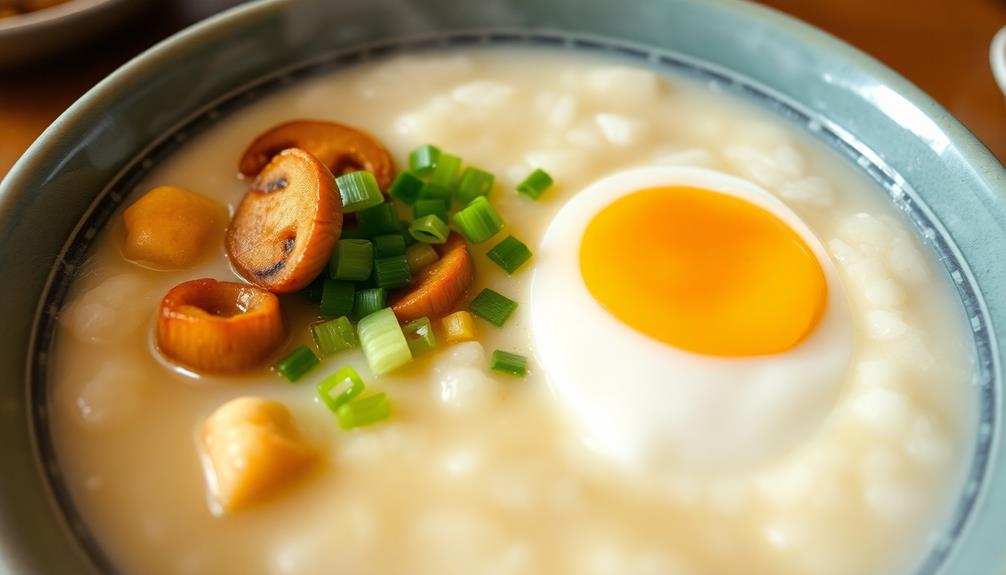
Serve the chao piping hot, as it's meant to be enjoyed immediately. Carefully ladle the steaming rice porridge into your favorite bowl, making sure to scoop up any delectable bits that have sunk to the bottom. The aroma is simply divine – a tantalizing blend of savory and soothing that'll have your mouth watering in anticipation.
Top your chao with the vibrant garnishes you prepared earlier. The fresh green onions and cilantro add a burst of color and fragrance, while the crispy fried shallots and peanuts offer delightful crunch and texture. Don't forget to drizzle on that savory soy sauce – it'll take your chao to the next level!
As you take your first spoonful, you'll be met with the wonderfully comforting and creamy texture of the rice porridge. Each bite is a harmony of flavors, with the different toppings complementing the simple yet satisfying base.
Slurp it up enthusiastically, savoring every moment. This is chao at its finest – a true delight for the senses.
Final Thoughts
Reflecting on the versatile and comforting nature of chao, the rice porridge offers a nourishing and adaptable meal that can be personalized to suit diverse tastes and dietary preferences.
You can start your day with a warm and hearty bowl, customizing it with your favorite toppings like savory sautéed greens, spicy sauces, or a sprinkle of toasted nuts.
As the weather cools, a steaming serving of chao can provide a soothing and satisfying respite, reminding you of the comforts of home.
The creamy texture and mild flavor allow you to easily incorporate chao into your meals, whether as a side dish, a base for stir-fries, or a wholesome snack.
Embrace the versatility of this timeless Asian staple and discover new ways to enjoy its comforting and nourishing qualities.
Chao is a versatile and delightful dish that can be savored any time of day, and its simplicity and adaptability make it a true delight to prepare and consume.
Frequently Asked Questions
What Are the Health Benefits of Eating Chao?
Eating this nutritious dish can provide you with a host of health benefits. It's rich in fiber, which aids digestion, and it may also help regulate blood sugar levels and support immune function.
How Long Can Cooked Chao Be Stored?
Cooked porridge can typically be stored in the refrigerator for 3-4 days. However, its shelf life depends on the ingredients used and proper storage. To maximize freshness, it's best to consume the porridge within a few days of preparation.
Can Chao Be Made With Different Types of Rice?
Absolutely, you can make chao with various types of rice. Long-grain, short-grain, brown, or even specialty rices can be used to create your own unique version of this comforting dish. The possibilities are endless!
Is Chao a Gluten-Free Dish?
Yes, chao is typically a gluten-free dish since it's made with rice. As long as you use gluten-free ingredients, you can enjoy this comforting porridge without any worries about gluten content.
Can Chao Be Served as a Meal or Snack?
Yes, you can serve chao as either a meal or a snack. It's a versatile dish that can be enjoyed at any time of the day, depending on your appetite and preferences.
